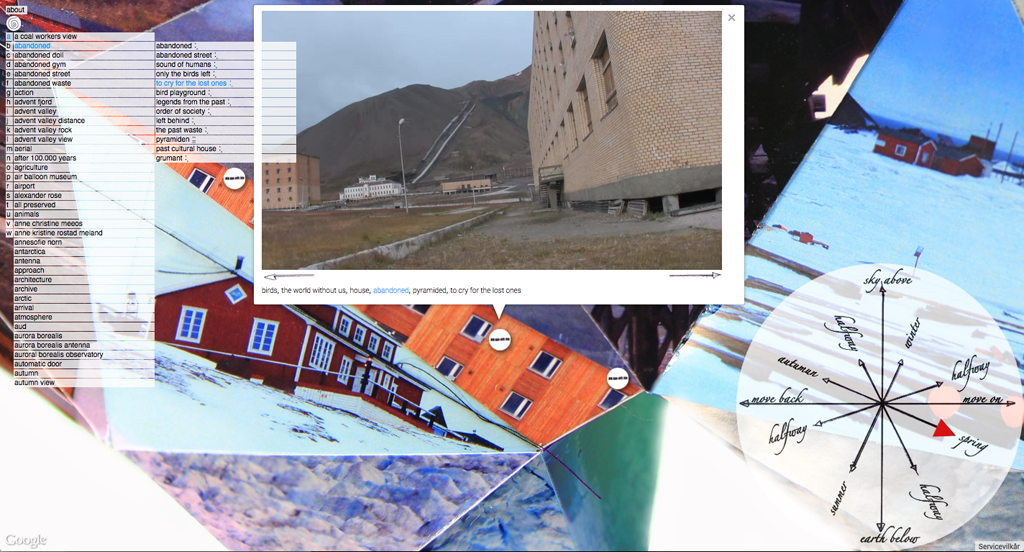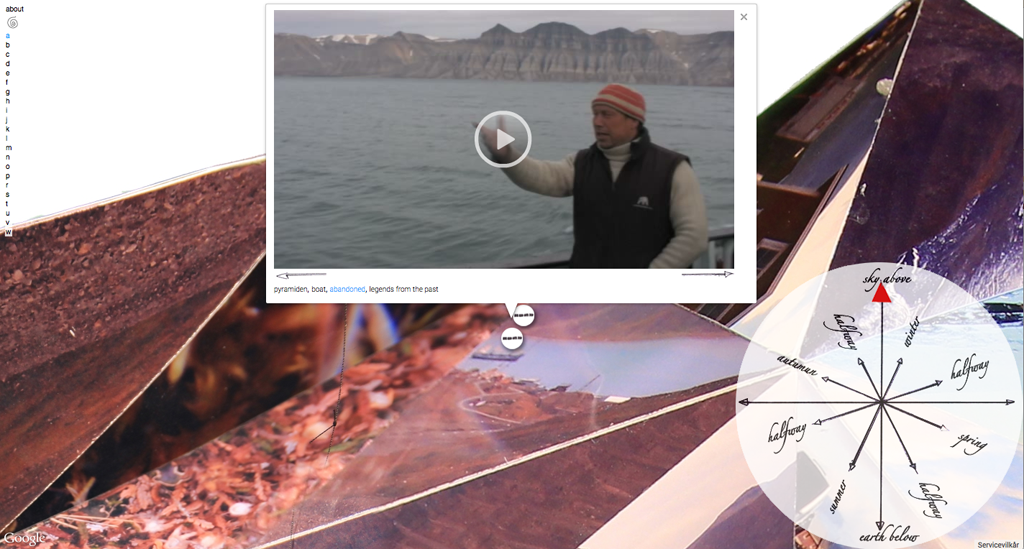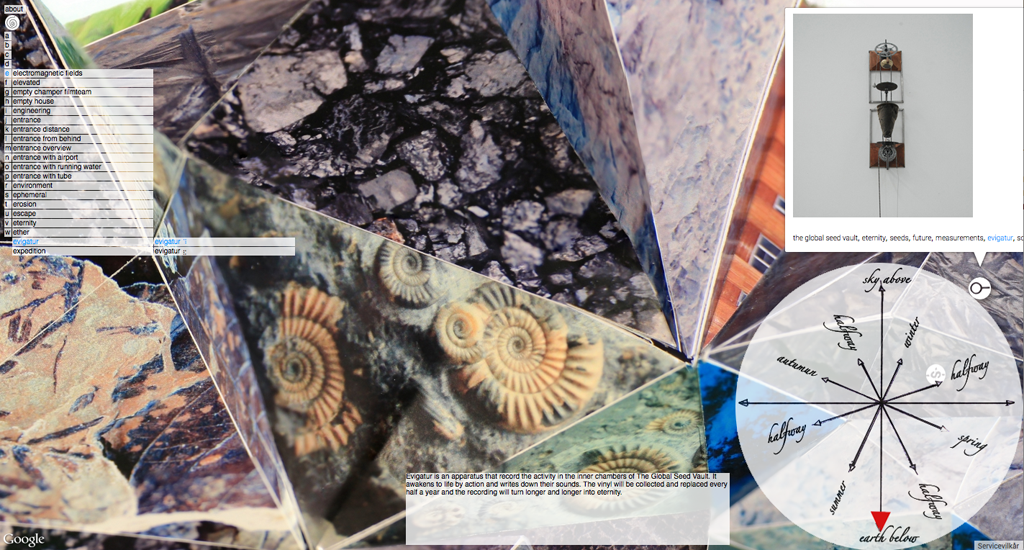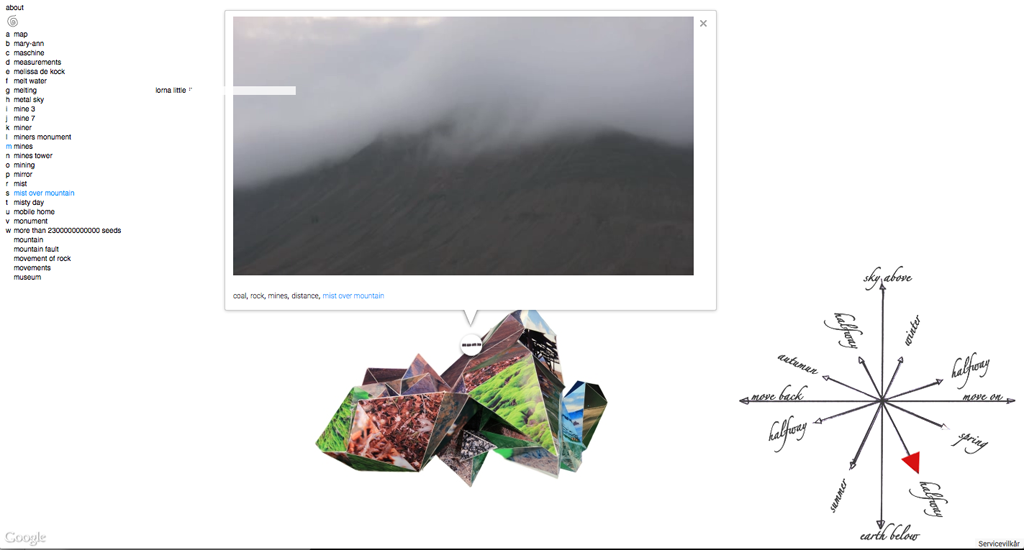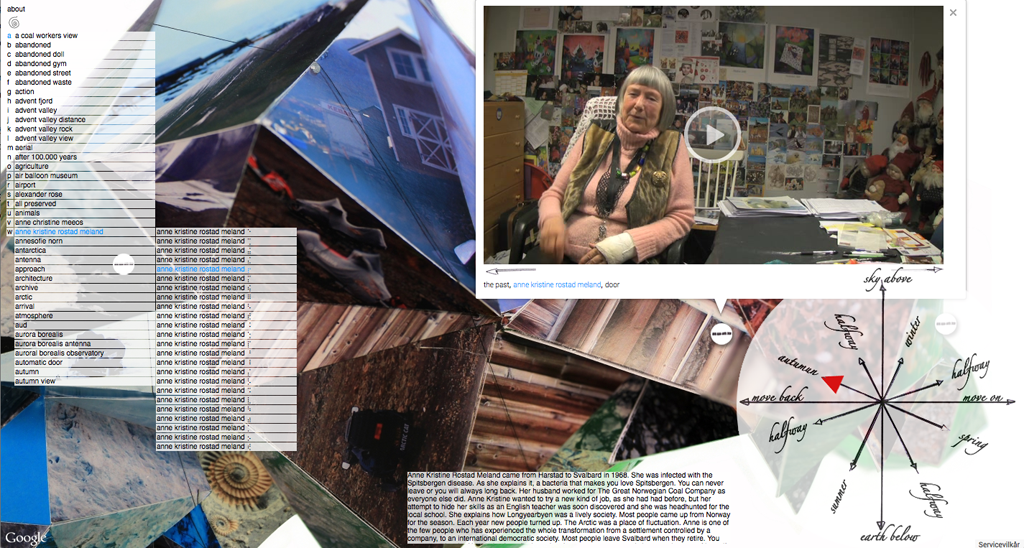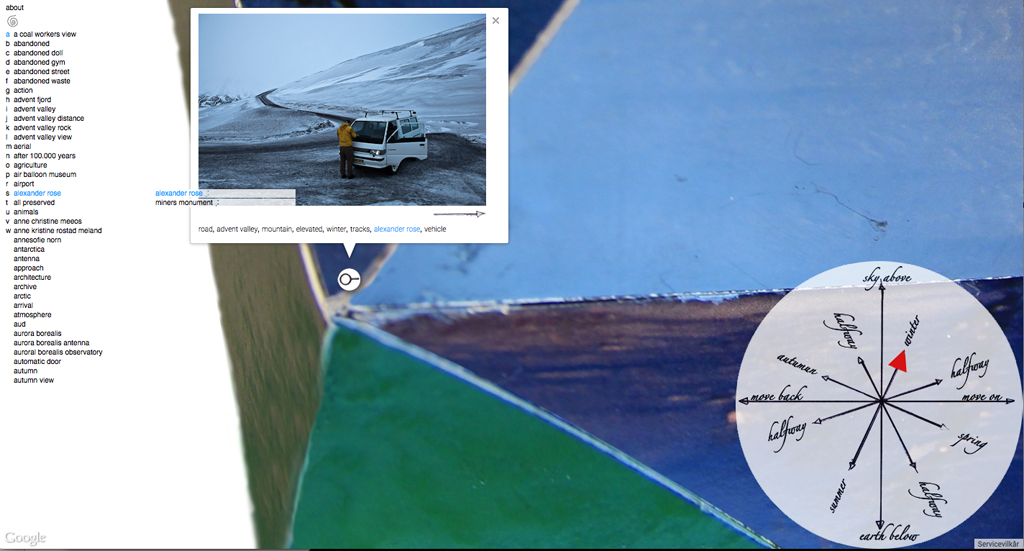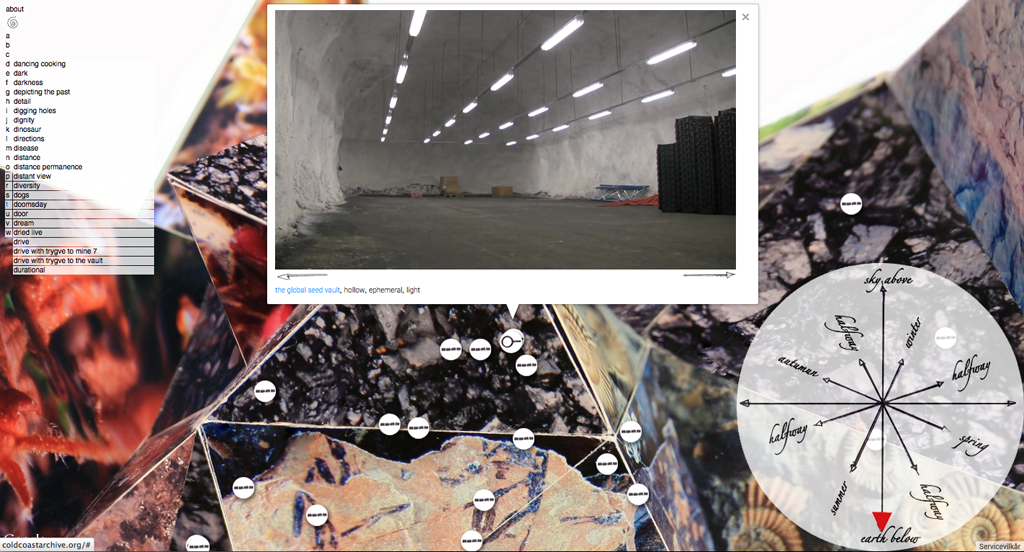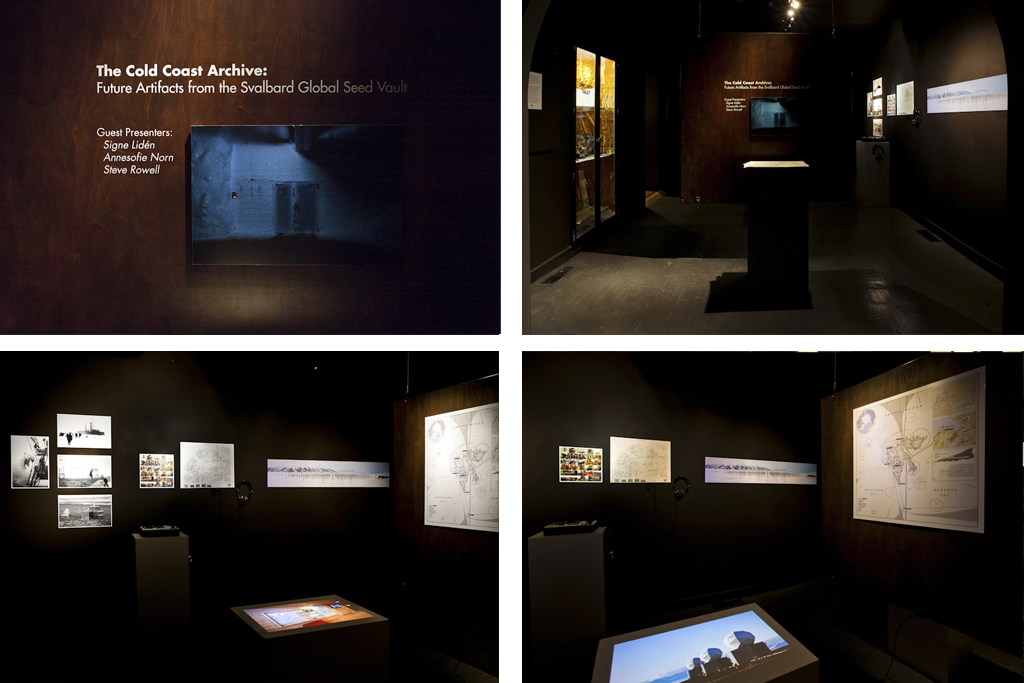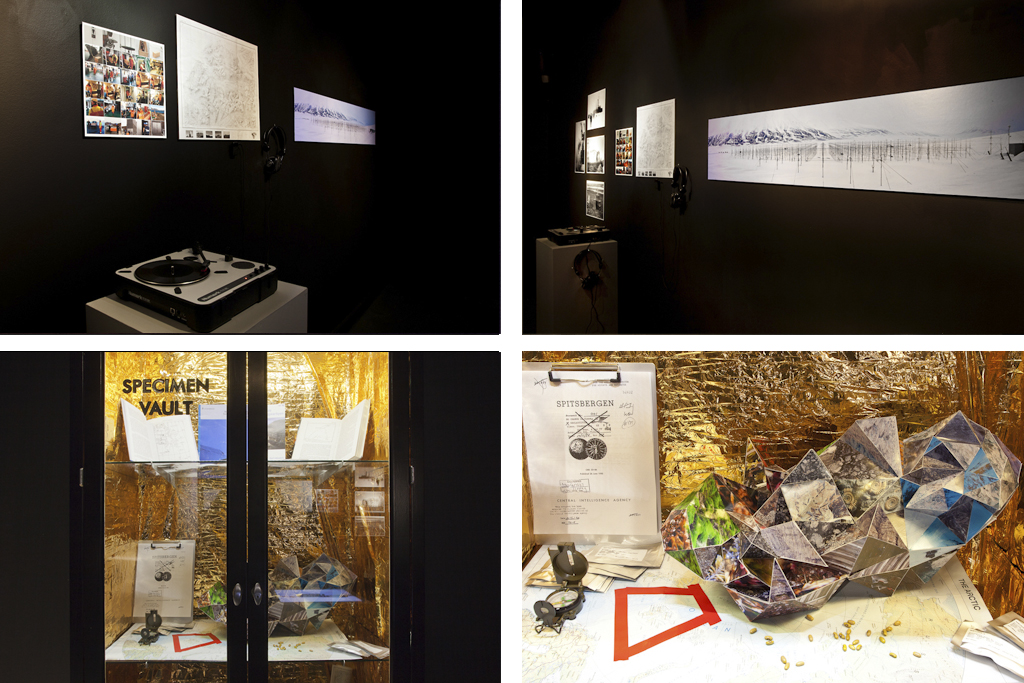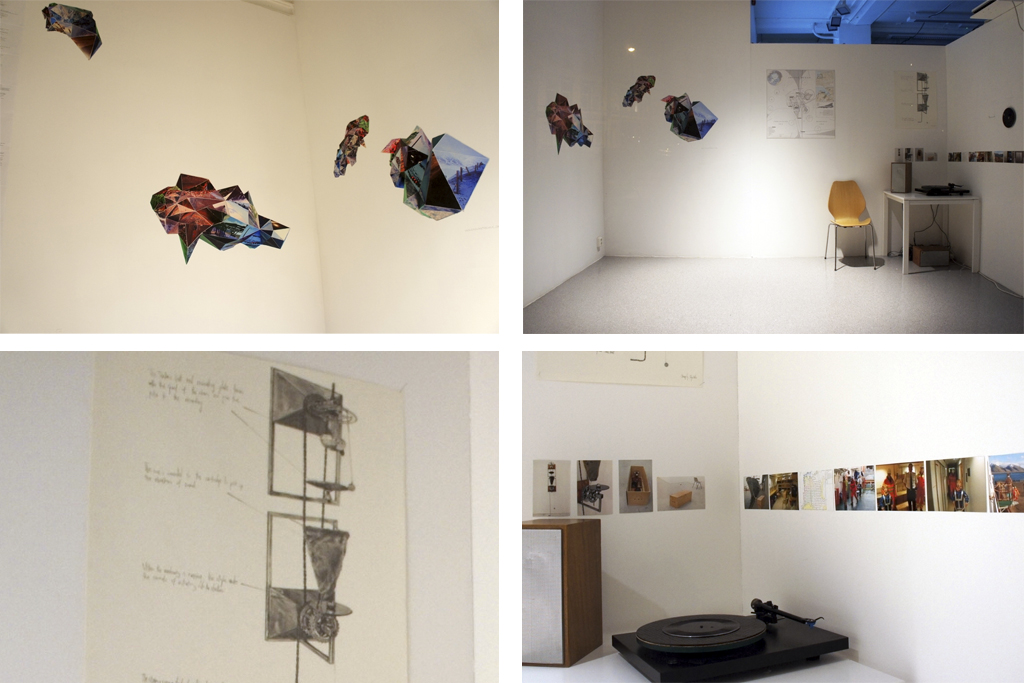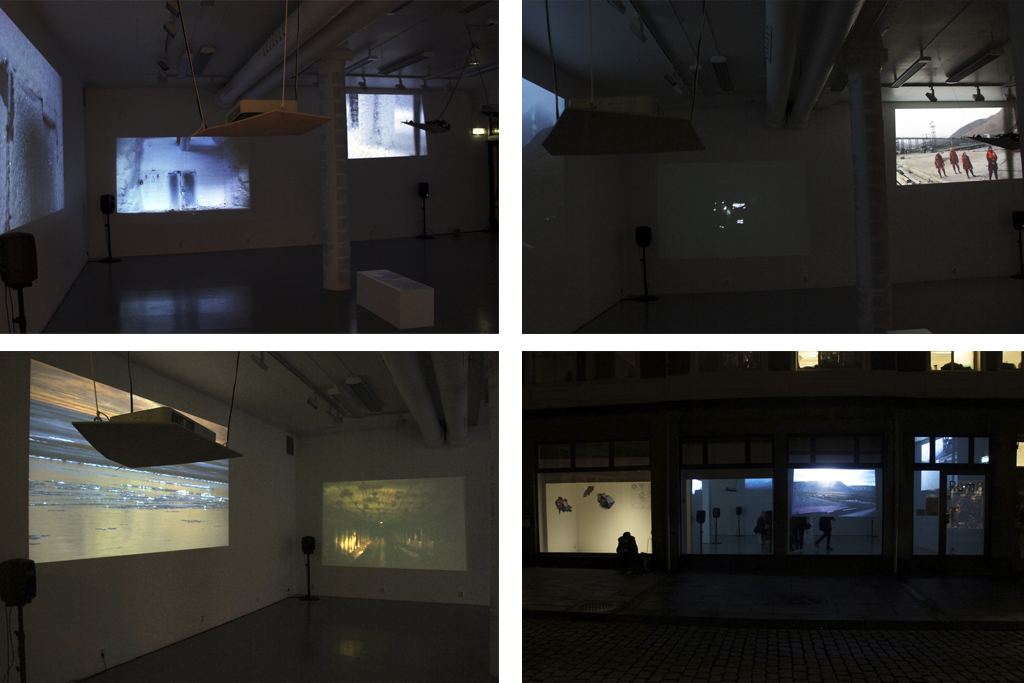The Cold Coast Archive is a joint project between artists Annesofie Norn, Signe Lidén and Steve Rowell using the Svalbard Global Seed Vault as a focal point.
The Svalbard Global Seed Vault is located on the outskirts of the remote, arctic town of Longyearbyen, on the island of Spitsbergen, in the Svalbard archipelago, halfway between the North Pole and Norway. As a biological safety deposit box, the seed vault has been compared to Noah’s Ark, and a back-up hard drive. The seeds stored here are duplicate samples held in seed banks worldwide — they provide insurance against extinction in the case of large scale regional or global catastrophes. The facility is about 130 meters above sea level and has been tunnelled 120 meters into the mountain. The location is built into the permafrostbe to guarantee low degrees – should there not be any human any longer to maintain the fascility, and it is high enough above sea level to secure the facility against future rise of sea level as a result of global warming, nuclear attack, and earth quakes.
The Cold Coast Archive project investigates and explores human beings’ efforts to preserve civilisation and defy the inevitability of its demise. It investigates Svalbards Global Seed Vaults practical, political, historical and symbolic structure, its arctic location, as well as its infrastructure and cultural nuances expressed in the local environment. The wide range of material collected is meant to form an archive of human perception of time between the present and eternity.
Eternity…this intangible future for which religious vocabulary seems to have gotten a monopoly. There is a gap between the present and eternity, a distance we often call “future generations” or “our children and grandchildren” in an attempt to relate to the distant future. This gap that might seem to be gnawed on by desires for quick profit and short term results, accelerated by technology and market-driven economies. It is the distance between an intense present, with major political, social and climatic challenges and an elusive future hiding beyond the horizon of our understanding that The Cold Coast Archive is relating to.
www.coldcoastarchive.org is currently under maintenance.
The webside
The principle of triangulation is applied as the formal structure of the Island. Printed photos from Svalbard is imposing a combinational structure of triangles as a continuous domain. Thus the island is forming the physical and metaphorical drawings of the islands structure.
The photos are sorted into season and latitude groups, with a liquid transition between each.
Moving through the Island you travel through time and geographical space. Horizontally from spring to summer over autumn. Vertically you travel from below through the matter of earth and dirt, the geological past and above into the Now of Longyearbyen and a human timescale of everyday life.
Thus we have collected a vast amount of material which is often interrelated directly through themes: sometimes just by a few words in a video, sometimes by the visual structure, the quality of the material, the person involved, or the concrete geographical location appearing over more seasons.
The Cold Coast Archive Exhibitions
Center for PostNatural History, Pittsburgh, May 15th – August 15th, 2012
Rom 8, Bergen November 16th – 25th, 2012
The exhibition at Rom 8 consisted of six projectors and six speakers, displaying a curated travel through video, field recordings and interviews from The Cold Coast web archive.
Here also a video made by Signe Lidén and Annesofie Norn while researching possible ways of creating dialogues between different material.
entrance from annesofie norn on Vimeo.

